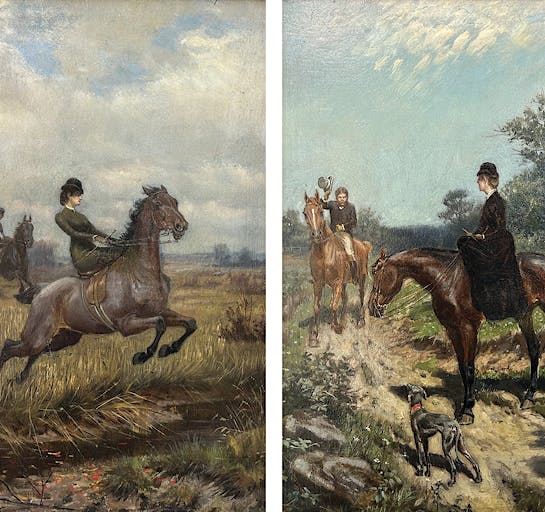James N Hess

James N Hess
Animal and landscape painter and illustrator. Born in Pennsylvania the son of a house painter, he was crippled from Typhoid Fever as a child and through the aid of a local benefactor was able to study painting at the Pennsylvania Academy of the Fine Arts. He is best remembered as an important influence on the internationally renowned African American painter from Pennsylvania, Henry Ossawa Tanner (1859 – 1937).
Tanner met Hess perhaps sometime in the latter 1870s, something he mentioned in an interview in The World’s Work (1909). He remarked that when he met the artist as a teenager that Hess was a “young” artist and that he recommended to Tanner that he should consider being a painter of animals (like himself) as there were too many marine painters working at that time. According to Marcia Matthews, author of Henry Ossawa Tanner: American Artist, “It may have been young James Hess who inspired Henry Tanner to study art one summer vacation,” leading him to first explore “…wider horizons than those delineated by his color.” It would make sense that a crippled painter would inspire his African American counterpart to be anything he wanted, regardless of any perceived impediment.
Hess worked as an illustrator for several lithography firms and did work for at least one article published in Harper’s Magazine in 1878. He exhibited for the first and only time at the Pennsylvania Academy of the Fine Arts in 1882 where he showed two works, “Texas Herder” and “Sunset.” Both works were owned and loaned to the exhibition by Daniel Hensel (1830 – 1919), a partner in the famous Philadelphia lithography firm of Herline & Hensel (active 1857 – 1866). It is possible that Hess worked for that firm in his youth as he was later associated with the lithography firm of George S. Harris & Sons at the time of his death.
Hess was recorded as working at the Philadelphia Zoo in 1886 with photographer Charles Crowthers, photographing and studying wildlife. At that time Hess’s studio was located on Chestnut Street in Philadelphia and that year he was featured in the Pennsylvania Historical Review which listed him as one of leaders in his industry, noting:
“J. N. Hess, Artist, No. 927 Chestnut Street – To lovers of the beautiful in art the handsomely appointed studio of Mr. J. N. Hess presents many attractions as upon its walls are to be found many pictures that bear the stamp of originality of conception and marked artistic ability. Mr. Hess is a native of Pennsylvania. and is well known in the art and social circles of this city. He has profited by a thorough and practical training, and this, coupled with his natural adaptability for his profession, has enabled him to attain to his present enviable position as a painter. He is prepared to execute every description of wok, making a specialty of animal portraiture, and in addition to painting pictures to order he has a choice collection which he offers at remarkably reasonable prices. Mr. Hess is thoroughly qualified in every respect to give the utmost satisfaction to patrons.”
James N. Hess died of inflammation of the lungs (perhaps due to the lingering aftereffects of his bout with Typhoid Fever as a child) on Monday, the 29th of December 1890 at the age of thirty-two years at his home at 3 Ridge Street, Frankford, Philadelphia. His service was held on the 1st of January 1891 at 1:30 p.m. from his home with burial taking place in Mount Auburn Cemetery in Philadelphia (with many of his fellow workers from George S. Harris & Sons invited to attend). Surprisingly, the expenses for his funeral survive and indicate a total cost of $93, including $38 for the casket, $12 for the shroud, $11.30 for casing and embalming, $18 for carriages and hearse, $1.50 for advertising (obituary), $1 for gloves and badges for the pallbearers, and $5 for opening the grave.
Most of his surviving paintings are animal portraits or genre works that depict animals and humans interacting and at least two western themed works have surfaced in recent years. Hess’s earliest known work is dated 1876, and his latest dated work is 1889, and all his known works are signed “J. N. Hess.” His most famous painting, entitled “Rail Shooting” (1885), which depicts a group of hunters in a wetlands shooting birds, was sold at Sotheby’s in 2001 for $126,700.

